
Operation Condor was a campaign of political repression involving intelligence operations, coups, and assassinations of left-wing sympathizers, liberals and democrats and their families in South America which formally existed from 1975 to 1983. Condor was formally created in November 1975, when Augusto Pinochet's spy chief, Manuel Contreras, invited 50 intelligence officers from Chile, Uruguay, Argentina, Paraguay, Bolivia and Brazil to the Army War Academy on La Alameda, Santiago's central avenue, which comprised the right-wing dictatorships of the Southern Cone of South America. The United States and, allegedly, France were frequent collaborators and financiers of the covert operations.

Jorge Rafael Videla was an Argentine military officer and dictator who was the 47th President of Argentina and as well as the 1st President of the National Reorganisation Process from 1976 to 1981. His rule, which was during the time of Operation Condor, was among the most infamous in Latin America during the Cold War due to its high level of human rights abuses and severe economic mismanagement.

The Dirty War is the name used by the military junta or civic-military dictatorship of Argentina for the period of state terrorism in Argentina from 1974 to 1983 as a part of Operation Condor, during which military and security forces and death squads in the form of the Argentine Anticommunist Alliance hunted down any political dissidents and anyone believed to be associated with socialism, left-wing Peronism, or the Montoneros movement.
Alfredo Ignacio Astiz is a convicted war criminal and former Argentine military commander, intelligence officer, and naval commando who served in the Argentine Navy during the military dictatorship of Jorge Rafael Videla during the Proceso de Reorganización Nacional (1976–1983). He was known as El Ángel Rubio de la Muerte, and had a reputation as a torturer. He was discharged from the military in 1998 after defending his actions in a press interview.
Hooding is the placing of a hood over the entire head of a prisoner. Hooding is widely considered to be a form of torture; one legal scholar considers the hooding of prisoners to be a violation of international law, specifically the Third and Fourth Geneva Conventions, which demand that persons under custody or physical control of enemy forces be treated humanely. Hooding can be dangerous to a prisoner's health and safety. It is considered to be an act of torture when its primary purpose is sensory deprivation during interrogation; it causes "disorientation, isolation, and dread." According to the International Committee of the Red Cross, hooding is used to prevent a person from seeing, to disorient them, to make them anxious, to preserve their torturer's anonymity, and to prevent the person from breathing freely.
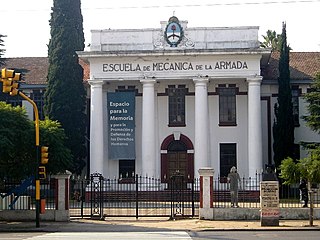
The Higher School of Mechanics of the Navy has gone through three major transformations throughout its history. Originally ESMA served as an educational facility of the Argentine Navy. The original ESMA was a complex located at 8151 Libertador Avenue, in the Autonomous City of Buenos Aires, in the barrio of Núñez. Additionally, It was the seat of U.T.3.3.2—Unidad de Tareas 2 of G.T.3.3 [es].

The National Reorganization Process was the military dictatorship that ruled Argentina from 1976 to 1983, which received support from the United States until 1982. In Argentina it is often known simply as the última junta militar, última dictadura militar or última dictadura cívico-militar, because there have been several in the country's history and no others since it ended.

Léonie Duquet was a French nun who was arrested in December 1977 in Buenos Aires, Argentina, and "disappeared". She was believed killed by the military regime of Argentine President Jorge Rafael Videla during the Dirty War. Alice Domon, a French nun working with Duquet, disappeared a few days later. They had been working in poor neighborhoods of Buenos Aires in the 1970s and supported the Mothers of the Plaza de Mayo, founded in 1977. Despite repeated efforts by France to trace the sisters, the Argentine military dictatorship was unresponsive. In 1990 a French court in Paris tried Argentine Captain Alfredo Astiz, known to have arrested Duquet and believed implicated in the "disappearance" of Domon, for kidnapping the two sisters. He was convicted and sentenced to life imprisonment in absentia. In Argentina at the time, he and other military and security officers were shielded from prosecution by Pardon Laws passed in 1986 and 1987. These were repealed in 2003 and ruled unconstitutional in 2005, and the government re-opened prosecution of war crimes.
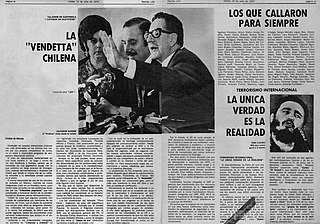
Operation Colombo was an operation undertaken by the DINA in 1975 to make political dissidents disappear. At least 119 people are alleged to have been abducted and later killed. The magazines published a list of 119 dead political opponents.
Black sites are clandestine detention centers operated by a state where prisoners who have not been charged with a crime are incarcerated without due process or court order, are often mistreated and murdered, and have no recourse to bail.
National Commission on the Disappearance of Persons was an Argentine organization created by President Raúl Alfonsín on 15 December 1983, shortly after his inauguration, to investigate the fate of the desaparecidos and other human rights violations performed during the military dictatorship known as the National Reorganization Process between 1976 and 1983.
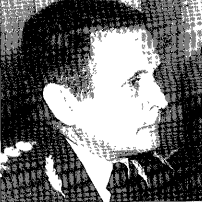
Miguel Osvaldo Etchecolatz was an Argentine police officer, who worked in the Buenos Aires Provincial Police during the first years of the military dictatorship of the 1970s, known as the National Reorganization Process, which Etchecolatz was deeply involved in. He was first convicted of crimes committed during this period in 1986; the full stop law, which passed that year and created amnesty for security officers, meant that he was released without a sentence. In 2003, Congress repealed the law and the government re-opened prosecution of crimes committed during the Dirty War.
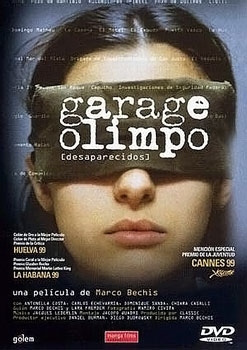
Olympic Garage is a 1999 Argentine political thriller, directed by Marco Bechis.
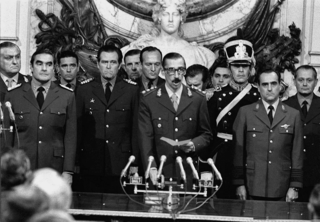
The 1976 Argentine coup d'état overthrew Isabel Perón as President of Argentina on 24 March 1976. A military junta was installed to replace her; this was headed by Lieutenant General Jorge Rafael Videla, Admiral Emilio Eduardo Massera and Brigadier-General Orlando Ramón Agosti. The political process initiated on 24 March 1976 took the official name of "National Reorganization Process", and the junta, although not with its original members, remained in power until the return to the democratic process on 10 December 1983. The coup was planned and executed within the framework of the Condor Plan, a clandestine system of repressive coordination between Latin American countries promoted by the United States, as part of the national security doctrine, which generalized dictatorships in Latin America in order to maintain the control over those countries during the Cold War.
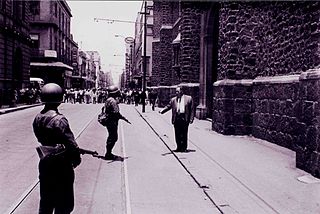
The Mexican Dirty War was the Mexican theater of the Cold War, an internal conflict from the 1960s to the 1980s between the Mexican Institutional Revolutionary Party (PRI)-ruled government under the presidencies of Gustavo Díaz Ordaz, Luis Echeverría and José López Portillo, which were backed by the US government, and left-wing student and guerrilla groups. During the war, government forces carried out disappearances, systematic torture, and "probable extrajudicial executions".

Patricia Murphy Derian was an American civil rights and human rights activist who opposed racism in Mississippi and went on to serve as Assistant Secretary of State for Human Rights and Humanitarian Affairs from 1977 to 1981. She was, remembered The Times of London, "a courageous champion of civil rights who took on some of the world's most brutal dictators in her role as a senior American diplomat".

Human rights abuses in Chile under Augusto Pinochet were the crimes against humanity, persecution of opponents, political repression, and state terrorism committed by the Chilean Armed Forces, members of Carabineros de Chile and civil repressive agents members of a secret police, during the military dictatorship of Chile under General Augusto Pinochet from 1973 to 1990.
El Olimpo was a clandestine detention center in Buenos Aires and used during the Dirty War in Argentina. Although it operated for only five months, from August 1978 to January 1979, about 700 people were illegally detained there, of whom only 50 survived. Jorge Fontevecchia, founder of the newspaper Editorial Perfil, was detained there.

The clandestine detention, torture and extermination centers, also called, were secret facilities used by the Armed, Security and Police Forces of Argentina to torture, interrogate, rape, illegally detain and murder people. The first ones were installed in 1975, during the constitutional government of María Estela Martínez de Perón. Their number and use became generalized after the coup d'état of March 24, 1976, when the National Reorganization Process took power, to execute the systematic plan of enforced disappearance of people within the framework of State terrorism. With the fall of the dictatorship and the assumption of the democratic government of Raúl Alfonsín on December 10, 1983, the CCDs ceased to function, although there is evidence that some of them continued to operate during the first months of 1984.
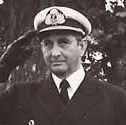
Rubén Oscar Franco is a retired Argentinian military officer who held power as a member of the Argentine Military Junta from 1982 to 1983. Representing the Argentine Navy, he took power after the Falklands War, later yielding this power to a new legally constituted government headed by Raúl Alfonsín.
![Memorial at the former detention center of Quinta de Mendez [es] Quinta de Mendez (Ex Centro Clandestino de Detencion).jpg](http://upload.wikimedia.org/wikipedia/commons/thumb/4/46/Quinta_de_Mendez_%28Ex_Centro_Clandestino_de_Detenci%C3%B3n%29.jpg/282px-Quinta_de_Mendez_%28Ex_Centro_Clandestino_de_Detenci%C3%B3n%29.jpg)













